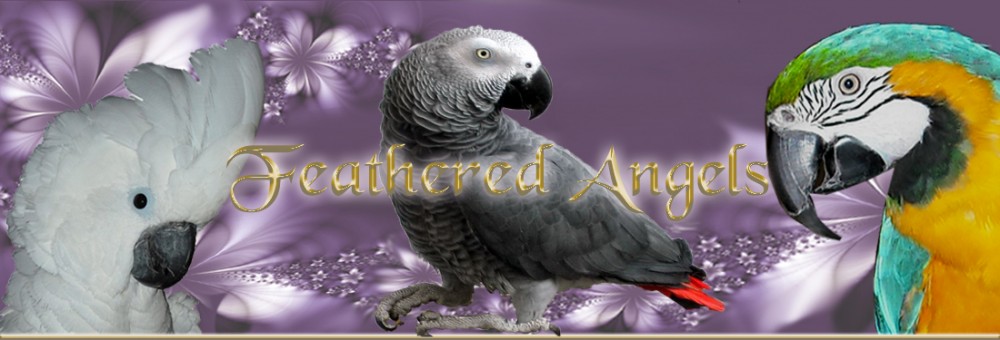This is one of the most helpful ways of working with your birds. My flock and I have such a wonderful relationship due to using ABA. I would strongly encourage everyone who has birds to use these techniques when working with your angels. You will be amazed at the difference you will see in only a very short time. Keep in mind always that there is no such thing as a bad bird, only stupid humans who arent paying attention to body language. Learn, Live and Love ABA! Many Thanks to Bev Penny and Janet Howell for their very patient explanations and teachings of ABA @Mytoos.com
Guidelines to Understanding ABA (Applied Behavior Analysis)
For Parrot People
By Bev Penny
1. Do not use anything but positive reinforcement – ever. You get back what you give. Do you like to be punished? None of us do. What we need to do is set our birds up to succeed, give them the chance to do it right.
2. There is no such thing as a bad bird. There is just a bird who has learned maladaptive behaviours. You CAN change this using positive reinforcement.
3. All behaviour has a reason. There is never “no reason” for a behavior.
4. We all have things we value and we will work to get those things. Our birds are no different. It is up to you to learn what they value and use this to reinforce wanted behaviour and eliminate/reduce unwanted behavior.
5. Do not use labels or constructs. Labels only tell you what you think your bird is doing and not what you observe your bird is doing. People who think they can read the minds of their birds, get bitten.
6. Simple environmental changes can go a long way to reducing/modifying problem behaviours in your birds and by changing the environment (antecedent change) you can also eliminate a lot of the destructive behaviour of parrots. Birds cannot damage things that are not within their reach.
7. Learn what intermittent reinforcement is so you don’t do it. It is a lot easier to stop an unwanted behaviour from ever happening than it is to eliminate/reduce it once you have intermittently reinforced it. This is huge. Learn what intermittent reinforcement is and understand what it is.
8. Never underestimate the value of a few minutes of clicker training. Even parrots like to have a job.
9. Teach your parrot what to do. Avoid saying what you don’t want him to do. Not doing something is not a behaviour. The ABA focus is on behaviour. You CAN change that.
10. For most of us, utilizing the tools of ABA will be a process, a journey. It takes time, it takes patience, it takes work but in the end it will be the most valuable gift you could ever give your bird or yourself.
Permission given to repost by Bev Penny March 23, 2011

Please – does anyone know of a trainer in the SF BAy Area who could come to my home for a few paid sessions? I have a relatively new macaw and I learn visually, with a teacher. My neighbors are complaining about the screaming and I am getting very, very stressed. Thank you -Maria